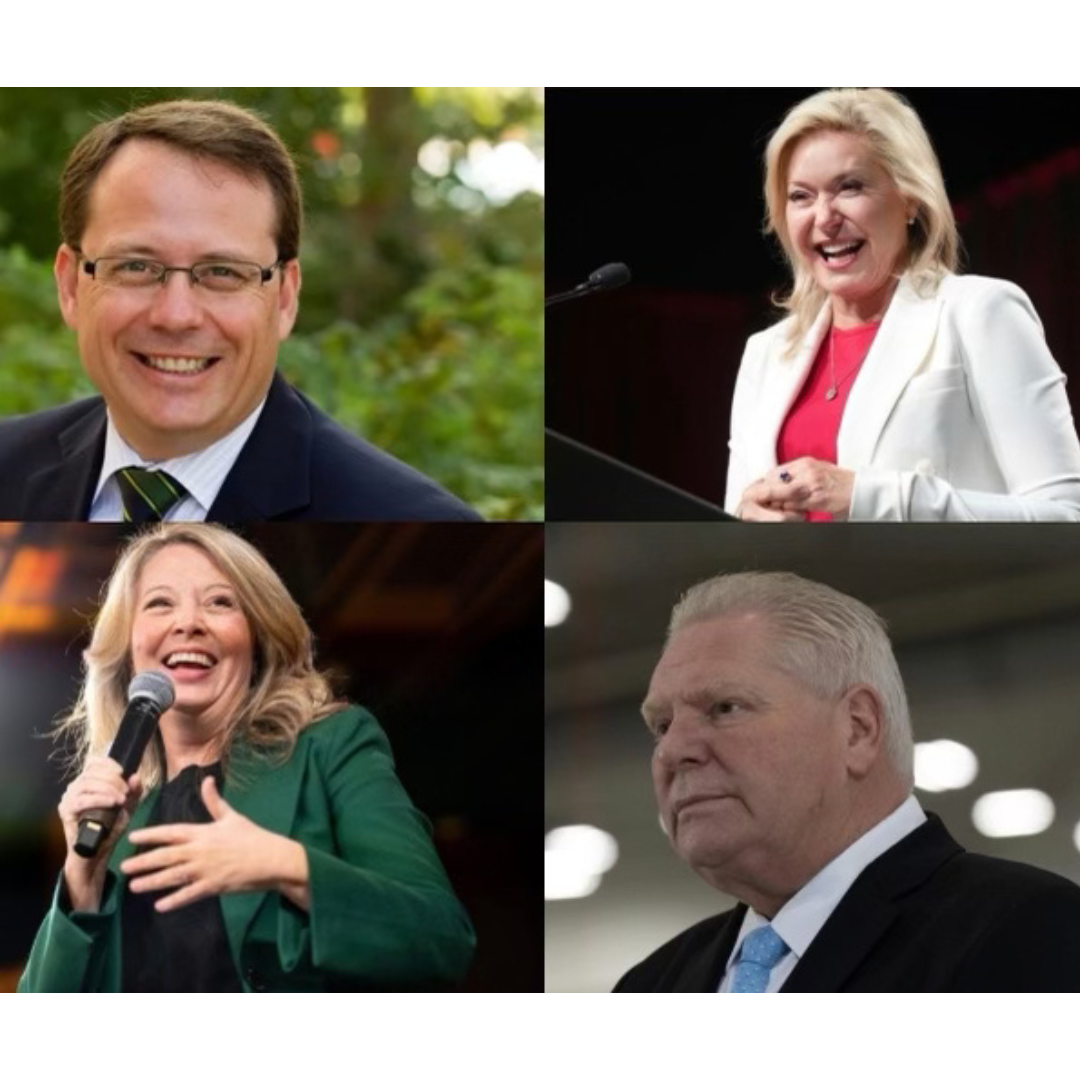As the Ontario general election on Feb. 27 approaches, the leading political parties have outlined their platforms and introduced candidates across the province. Let’s look at the leading parties and some of their major plans.
Progressive Conservative (PC) Party of Ontario
Doug Ford, the current Premier of Ontario, is the leader of the PC Party. The conservatives called this early election to rally support against the proposed U.S. tariffs on Canadian goods. He has positioned himself as a defender of Ontario’s economy and is hoping to secure a fresh four-year mandate while his party is still in a strong position.
In response to proposed U.S. tariffs, the PC Party plans to implement dollar-for-dollar retaliatory tariffs on American products and consider removing American alcohol from provincial stores if President Trump follows through with his plan.
Regarding infrastructure, the PC Party proposes building a tunnel under Highway 401 from Mississauga to the Markham area to alleviate traffic congestion. It also plans to remove tolls from the eastern, provincially owned section of Highway 407 and make the gas tax cut permanent.
Additionally, the PC Party wants to ban Chinese equity from Ontario Government-funded energy, critical mineral and infrastructure assets.
Ontario Liberal Party
The Liberal leader, Bonnie Crombie, has a different plan for fighting Trump’s proposed tariffs. She would establish a “fight tariff fund” to provide Ontario businesses with lower interest rates and eliminate interprovincial trade barriers.
The Liberal Party also plans to make strides in healthcare, offering a $150,000 bonus to Canadian doctors and nurses working in the U.S. if they return to practice in Ontario. The party pledges to double Ontario Disability Support Program (ODSP) benefits and ensure all Ontarians have access to a family doctor within four years by expanding the health team network and recruiting thousands of new domestically and internationally trained family physicians.
Regarding education, the Liberal Party plans to eliminate interest on Ontario Student Assistance Program (OSAP) loans, create 40,000 co-op positions, paid internships and apprenticeships through tax credits to companies that hire young people, and make student residences more affordable. They also want to cap international student enrolment at 10 per cent for each post-secondary institution and keep tuition frozen for domestic students.
Ontario New Democratic Party (NDP)
Marit Stiles is the NDP’s leader, and her plan for the tariffs includes implementing a federal-provincial income support program, directing agencies to prioritize local procurement and creating new supply chains for trade-exposed industries. When asked about cost, Stiles said an NDP government would “work in lockstep with the federal government to deliver the stimulus.” No estimated cost was provided.
The NDP promises to abolish tolls for all drivers on Highway 407 and create a monthly grocery rebate for lower- and middle-income Ontarians, with a family of four eligible for up to $122 per month. They also plan to require large retailers to publicly post price increases exceeding two per cent within a week.
In healthcare, the NDP also promises to ensure every Ontarian has access to a family doctor by recruiting and supporting 3,500 new doctors, reducing the administrative burdens on doctors, and introducing more family health teams and shorter specialist wait times. They also plan to increase the number of internationally trained doctors at a total cost of $4 billion.
Concerning education, the NDP vows to spend an additional $830 million to repair schools, hire more staff, support students with disabilities, invest in French education and create a universal school food program.
Green Party of Ontario
Led by Mike Schreiner, the Green Party plans to create a “tariff task force,” introduce an investment tax credit, develop a “Buy Ontario” strategy, establish a “Protect Ontario Fund” for businesses disproportionately impacted, diversify trade partners and work to remove interprovincial trade barriers to combat Trump’s economic threats.
The Green Party has similar education plans to the NDP, and like the Liberals, they plan to double the ODSP rates.
For housing, the party aims to build 310,000 affordable non-profit and co-op homes, including 60,000 supportive homes. It has pledged to remove development charges on homes under 2,000 square feet and remove the land transfer tax for first-time homebuyers. The Greens also want to cut income taxes for people making under $65,000 a year and raise taxes on people in the top tax bracket. They pledge to build two million homes over the next decade and will fund the operation of 60,000 supportive housing units at a cost of $2.5 billion over four years. Additionally, they will introduce new taxes on housing opportunists, including an anti-flipping tax and a speculation tax on an individual’s third home.
Voting
Election day is Feb. 27 with polls open from 9 a.m. to 9 p.m., but you can vote at your local election office any time during their office hours until 6 p.m. on February 26.

